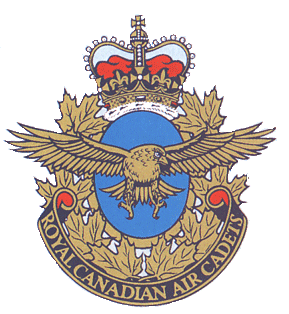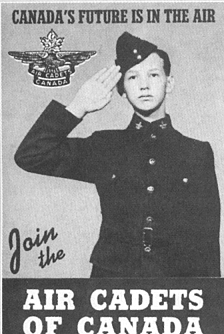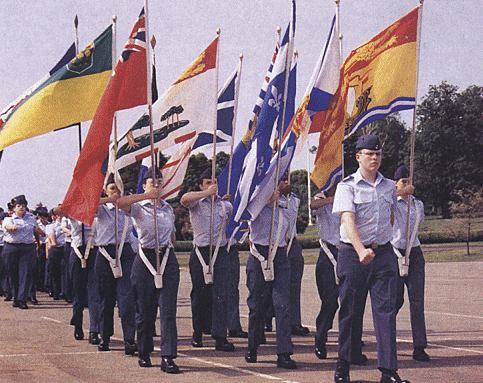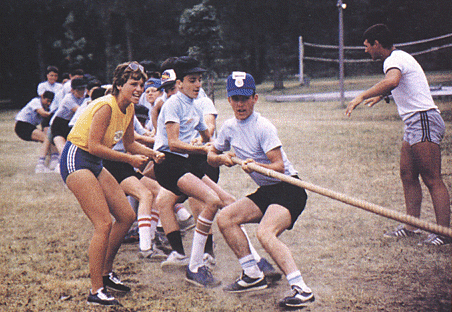
By Richard Logan
To understand why and how the air cadets came into being- it is necessary to recall the early days of WW II. France had fallen, the Low Countries had been invaded, and Britain was under heavy attack from the air. The critical need was for aircraft and more aircraft, and for trained young men to fly them in defence of freedom. Against, this background there grew in Canada the idea of a select corp teen-aged youths who would devote some of their spare time in preparing for the day when they would take their places as aircrew in the ranks of the Royal Canadian Air Force (RCAF).
In 1940, the Hon C. C. "Chubby" Power, minister of defence for air, who was very much aware of the:need for air cadet tralning, called in a group of influential civilians and asked them to organize a country-wide voluntary organization to sponser and develop this growing movement. The response was immediate, and a civilian organization called the Air Cadet League of Canada was soon created to work on a partnership basis with the RCAF. As it later developed, this partnership was to be the main reason for the striking success of the air cadet movement in Canada.
On 11 Nov 1940, Order-In-Council P.C. 6647 was passed. This order authorized the formation of the League, and set forth the responsiblities of the civilian body and of the RCAF. On 9 Apr 1941, the League was granted a Dominion Charter,
The primary purpose of the movement during its formative years was a military one, but its founders were also thinking in terms of the long-range benefits of air cadet training. They realized that through voluntary study, cadets would improve their knowledge and increase their usefulness to the community. And in supervised squadron activities they would find opportunities to develop those qualities usually associated with good citizenship. It was the character-building aspect of air cadet training which appealed most strongly to the youth leaders of the country. Service clubs, educators, boards of trade and veterans groups such as the RCAF Association, offered their services to the League, not only as a contribution to the War effort, but also as a means of assisting the youth of the country along the read to good citizenship.
In Sept of 1944 the movement reached the peak war strength of 374 squadrons, more than 29,000 cadets, 1,750 officers and instructors and another 2,000 civilians who supplied financial and other support.


The peacetime story of the air cadet movement is perhaps even more impressive than its wartime history. Commencing in the late 1944, the League/ RCAF partnership planned and carried out its wartime peacetime conversion with the same vigour that it tackled its wartime responsibilities. Probably the most important job facing the air cadet movement in 1945 was to provide an incentive which would rival in its appeal the wartime goal of graduation into the RCAF. The answer was found in a variety of awards for outstanding proficiency and loyalty to the squadrons.
Immediately following the end of the war, there was a natural lessening of interest in all cadet activities throughout Canada. Many squadrons which had been established "for the duration" were disbanded and the movement settled down to a low point of approximately 11,000 cadets in 155 squadrons.
In 1946, the Government approved a maximum establishment for the post-war period of 15,000 cadets across Canada. Simultaneously, a new peacetime program for air cadets, based on a combination of aviation and citizenship training, was put into effect by the League and the RCAF.
Early in 1949, the movement spread to the new province of Newfoundland where six active squadrons, all supported by strong civilian committees, were in operation only a few weeks after confederation. A year later, the need for an increase in the maximum establishment was recognized by the government and the ceiling was raised to 22,500 cadets.
As the League paused to observe its tenth anniversary in 1951, it could point to a fine record of service to Canada. Some 65,000 boys had worn the air cadet uniform and participated in the training program. Now, 48 years later, the number of air cadet participants exceeds one million and there are 444 squadrons in operation.
air cadet training which appealed most strongly to the youth leaders
of the country.



In the first few years, gliders were loaned or leased to the League by soaring clubs in different parts of the country, who also helped out with pilots and instructors. The RCAF cooperated in the effort by providing support staff and equipment, including two L-19 tow aircraft.
However, in 1967 a glider procurement program was lanched by the League with the goal of building up own fleet of gliders for use not only at summer camps, but during the sprlng and fall gliding seasons well.

Following several years of "unofficial" participation in squadron-operated "girl cadet flights," official participation by girls in the air cadet movement was approved by parliament on 30 July 1975. At the present time, girls make up about 30 perent of the enrolment in air cadet squadrons cross the country.
As we pause to celebrate the 75th anniversary of the RCAF, our 58 year partnership with Canada's air force, and look forward to the new millennium, it is evident that the founders of the air-cadet movement planned better than they realized when they teamed up military and civilian resources in an operating partnership that has been the real secret behind the success of the movement in Canada. The philosophy is simple: Although there is a very significant military involvement in the air cadet movement, both partners are very proud of the fact that membership, for both cadets and adults, is completely voluntary and that the air force supports the program for the same reason that the civilian volunteers do - that is, for its effectiveness in providing citizenship training benefits for Canadian youth.
Both sides of the partnership believe that the program should be kept as completely up to date and as progressive as possible, especially in view of the changing attitudes of today's youth. However, they also believe that there is a place in our society for an aviation education program which is not entirely permissive which requires the participants to meet certain standards of dress, appearance and behaviour; and which expects our young people to accept a full measure of personal responsibility for their own actions.
The partnership believes that every air cadet should have the opportunity to qualify for the most attactive rewards the program can offer and that an air cadet should be able to earn these awards in only one way - by working for them. None of the air cadet, training rewards or scholarships can be purchased; they must be earned through good service with their squadron and by meeting the standards that have been established.
While air cadets are not required to pay membership fees or dues in order to belong, they are all expected to take part in fund-raising and other support projects initiated by the Air Cadet League. Without this active cadet participation, it is doubtful that the organization would be able to carry on.
For more information, contact:
Executive Director
Air Cadet League of Canada
313 Rideau Street Ottawa, ON K1N 5Y4
tel: (613) 991-4351 fax: (613) 991-4347
Stephen J. Clark
Airforce
The Magazine of Canada’s Air Force Heritage
Vol 22 No 3 Fall/Automne 1998
The vision of the air cadet movement is that they be acknowledged as the best - the most influential, innovative and expert organization - in the community of youth development organizations.
